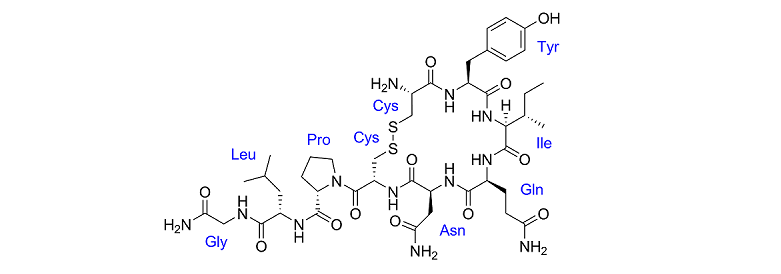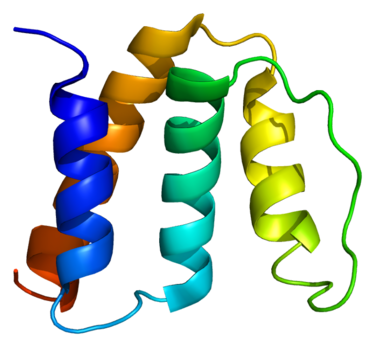Ayahuasca is the shamanic brew comprised of two plants… Psychotria Viridis which contains N,N-DMT and Banisteriopsis Caapi which contains the monoamine oxidase inhibitors (MAOIs) harmine, harmaline, and tetrahydroharmine. The combination of the plants allow the DMT to remain orally active which contributes to the “hallucinatory” effects of the potion.
When it comes to “Endohuasca”, it appears as though the combination of biochemicals is potentially much more varied. As we’ve covered quite extensively at DMT Quest, there are three DMT(s) produced naturally within the body… N,N-dimethyltryptamine (N,N-DMT), 5-methoxy-N,N-dimethyltryptamine (5-MEO-DMT) and Bufotenin (5-HO-DMT). In terms of the endogenous monoamine oxidase inhibitors (MAOIs) that would afford the suppressed breakdown of the 3 DMT(s), we have come across the following: (MAO-A inhibitors) – Tribulin A, Tryptoline, Pinoline, Harman, Neurocatin, Isoquinolinium derivatives (Salsolinol, 1MeTIQ), and Rines (a MAO-A modulator) & (MAO-B inhibitors) – Phosphatidylserine, Quinolic Acid, and Tribulin B.
*Even the first neurotransmitter to be discovered, acetylcholine has been observed to have monoamine oxidase inhibitory properties.
One of the most interesting (and very common) endogenously produced compounds that appears to have a definitive action in terms of MAO inhibition is the hydroxyl radical (•OH). A 2001 study in Life Sciences observed a linear relationship between the levels of brain hydroxyl radicals and MAO-A/MAO-B inhibition. In addition, even the first neurotransmitter ever discovered, acetylcholine has been shown to possess MAO inhibitory properties.
While we could end the discussion of “Endohuasca” at the DMT(s) and MAOI perspective, we feel that it would not provide a comprehensive picture as to the complexity of the biochemical factory known as the human body. In our search for understanding altered states and the potential biochemical correlates, we’ve come across additional endogenously produced molecules that should be taken into account.
Oxytocin

Known most famously as the “love hormone”, oxytocin is produced by the hypothalamus and secreted by the pituitary gland into the bloodstream. This molecule acts upon the oxytocin receptor (OXTR). It’s been observed that oxytocin concentrations can be up to 1000X higher in the brain than the peripheral blood, indicating a potentially important role in the central nervous system (CNS). Exogenous administration of oxytocin has produced a wide array of physical and psychological effects including the following: lactation, uterine contractions, initiation of maternal behavior, antidepressant effects, emotional bonding, the modulation of anxiety/fear, and feelings of trust/generosity. Several animal studies indicate a circadian rhythm based fluctuation of oxytocin observing that circulating levels increase at night (1, 2, 3).
Anandamide

Anandamide is a fatty acid neurotransmitter known as the “bliss molecule” that acts upon the cannabinoid receptors (CB1) in the central nervous system and cannabinoid receptors (CB2) in the peripheral nervous system. Tetrahydrocannabinol (THC) is the principle psychoactive component of the cannabis plant and anandamide has been cited to have a similar chemical structure with overlapping effects. A 2015 study in EMBO Reports observed that anandamide is secreted via microglial extracellular vesicles. Numerous animal studies regarding anandamide’s role in the body have observed effects on multiple functions such as appetite, memory/cognition, sleep, pain modulation, mood, immune function, and even “runner’s high”(in mice). Various studies found a circadian rhythm to anandamide secretion with an increase at night and a specific effect on REM sleep (1, 2, 3, 4, 5, 6).
Adrenochrome

In the early 1950s, Canadian researchers proposed adrenochrome (produced by the oxidation of adrenaline) as a potentially leading biochemical culprit in the symptoms of schizophrenia. A 1963 study led by Dr. Stan Grof would administer two levels of adrenochrome (15 mg and 30 mg) via sublingual route to a total of 15 volunteers. It was observed that the 30 mg dose induced psychotic reactions including thought disorder, euphoria, de-realization, tactile hallucinations, minor visual illusions, and forced laughter. The 15 mg dose produced no such effects in the majority of the subjects. It is not clear whether adrenochrome acts upon the α- and β-adrenoreceptors similarly to adrenaline. Similarly, there is little circadian rhythm data regarding adrenochrome but based on reviewing adrenaline circadian rhythm, it appears as though levels are suppressed nocturnally.
Morphine

Most famous for being an exogenous opiate utilized for it’s analgesic properties, this compound also happens to be synthesized within human cells. It has been shown to have affinity for the mu3-opiate receptor. In testing various vertebrates, morphine has been found in the brain, heart, adrenal glands, white blood cells, and plasma. A 2008 mouse study in the Journal of Neurochemistry observed that dopamine is necessary for the formation of morphine in the brain in vivo. A 2007 rat study in the journal Neuropeptides observed a circadian rhythm for the endogenous opioid system (not morphine specific) modulated by melatonin.
Dynorphin

Dynorphin is an opioid peptide that is an agonist of the kappa opioid receptor (KOR). Dr. Dave Nichols has proposed the hypothesis that dynorphin is the leading endogenous chemical candidate in terms of explaining the phenomena of “Out of Body Experiences” and “Near Death Experiences”. Interestingly enough, the hallucinogen Salvia divinorum interacts with one receptor in the human brain… the kappa opioid receptor (KOR). Research regarding dynorphin’s endogenous functions has found that it plays a role in modulating pain, stress, depression, appetite, and temperature regulation. A 1983 study published in Science would observe circadian based fluctuations of dynorphin in the hypothalamus of rats. It was observed that there was a 500% surge in dynorphin concentrations from 12am to 4am compared to waking state hypothalamic dynorphin levels.
gamma-Hydroxybutric acid (GHB)

GHB is a neurotransmitter that acts upon the GHB receptor and the GABA-B receptor (weakly). The exogenous form of this molecule has been used medicinally as a general anesthetic, as well as a treatment for narcolepsy and alcoholism. It is commonly referred to as the “date rape drug” for inducing deep unconscious states and disrupting memories when ingested at high doses. Recreationally at moderate doses, GHB induces feelings of euphoria, disinhibition, and increased libido. There is not much data indicating a circadian rhythm for GHB levels but there lies the possibility it is upregulated at night based on it’s sleep inducing properties when taken exogenously.
Diazepam Binding Inhibitor (DBI)

Diazepam Binding Inhibitor (DBI) is a protein found in the central and throughout the peripheral nervous system that acts upon the GABA receptor. This protein was discovered in 2013 and made headline news worldwide with titles such as, “Brain’s Own Valium Discovered“. Valium is a synthetically derived and frequently abused sedative-hypnotic prescription drug. Some of the effects of Valium have been described as feelings of euphoria and deep sedation. There is not much information regarding the circadian rhythm fluctuations of DBI but based on it’s sedative-like properties we presume that there could be an upregulation taking place during the nocturnal phase of the 24 hour cycle.
Alpha-Endopsychosin
What is definitively the most obscure of the bunch… alpha-endopsychosin acts upon the N-methyl-D-aspartate glutamate receptor (NMDAR). Dissociative compounds such as phencyclidine (PCP aka “Angel Dust”) and Ketamine also have high affinity for this receptor. In addition to the dissociative properties of NMDAR antagonists… analgesia, hallucinations, euphoria, and agitation have also been observed. There is little information regarding any circadian rhythm fluctuation of this compound. Credit to Hamilton Morris for mentioning this obscure chemical in his most recent appearance on the Joe Rogan Podcast.
Just to keep things in order, let us list the entire number of compounds that we believe compromise the Endohuasca soup:
- DMT
- 5-MEO-DMT
- Bufotenin
- Oxytocin
- Anandamide
- Adrenochrome
- Morphine
- Dynorphin
- Gamma-Hydroxybutric Acid (GHB)
- Diazepam Binding Inhibitor (DBI)
- Alpha-Endopsychosin
- Tribulin A
- Pinoline
- Tryptoline
- Harman
- Neurocatin
- Isoquinolinium derivatives (Salsolinol & 1MeTIQ)
- Rines
- Phosphatidylserine
- Quinolic Acid
- Tribulin B
+ The lowly hydroxyl radical (•OH), acetylcholine, glutamate, dopamine, GABA, serotonin, & melatonin.
Understanding the interactions between these biochemicals in real-time, in vivo within the human brain is quite an extraordinary task. It appears clear that none of these molecules truly act singularly being that isolated exogenous administration causes cascade fluctuations in numerous other endogenous biochemicals. In addition, the levels of exogenous ingestion far surpass that of what might be considered normal endogenous production. Nevertheless it is quite interesting that the human body potentially produces the equivalent of “Angel Dust/PCP”, Salvia, “The Date Rape Drug”, THC, Valium, and heroin in addition to “The Spirit Molecule” and “The God Molecule”.
It seems as though a case could be made for a synergy of sorts amongst all of these biochemicals being that there is much overlap in terms of their effects regardless of receptor affinity. In some cases, extremely high stress/trauma could possibly correlate with an uptick in compounds such as adrenochrome which wouldn’t coincide with more relaxed states of being. For example, “Out of Body Experiences” have been reported from deep relaxative states such as hypnosis as well as occurring from extremely high stress such as on the battlefield in war. It would seem illogical to assume that the exact same biochemical composition occurs when two very different environments are utilized to induce similar phenomena.
We believe that there is a potential role for many of these chemicals being upregulated during REM sleep (as well as hypnosis, meditation, Wim Hof Method, Holotropic Breathwork, sensory deprivation, etc.) based on observing their circadian based fluctuations. However… comprehending the levels of each chemical, their secretory rates, their secretory sites, the effects of their metabolites, the effects of rhythmic respiratory fluctuations, and their interactions with each other during the REM based theta-gamma oscillations is quite a few years down the road. It wouldn’t be surprising to see many more “strange” endogenous chemicals arising from future research as it seems as though the body is a never ending factory of fun. We will just have to update the ingredients list of the strange gumbo known as the “Endohuasca Soup”.
E-mail me at jchavez@dmtquest.org with any questions or comments.
DMT Quest is a non-profit 501(c)3 dedicated to raising awareness and funds for endogenous DMT Research. This specific field of psychedelic research has been underfunded for many decades now. It’s time to take our understanding of human physiology, abilities, and perception to the next level. You can also follow us at Facebook, Instagram, or Twitter.
